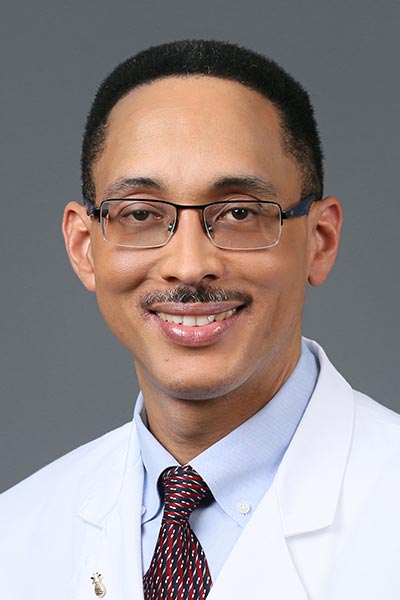Heart disease has long been recognized as the leading cause of death among Black Americans, which makes it fitting that February brings both American Heart Month and Black History Month. The Centers for Disease Control and Prevention and the American Heart Association report that Black Americans are more than three times more likely to die of cardiovascular causes associated with hypertension compared with non-Hispanic White individuals.

“To put it in a different frame, there were almost 200,000 excess deaths and 5.8 million excess years of life lost due to hypertension in Black Americans relative to White Americans between 2020 and 2022,” said Marcus St. John, MD, an interventional cardiologist at the Miami Cardiac & Vascular Institute, part of Baptist Health South Florida. “There were an estimated 46,578 excess deaths and 1.3 million years of potential life lost to heart failure in that same period. Even though we have seen trends toward decreases in cardiovascular risk and outcomes, the trends in underresourced communities are much less favorable and the declines much less dramatic.”
There are no clear biological explanations for disparities in cardiovascular risk factors and outcomes across different racial and ethnic groups, Dr. St. John said. But the associations between social and societal factors, social determinants of health, and both cardiovascular risk and outcomes are clear.
Underresourced populations fare less well, as do rural populations. These populations tend to lack access to the latest technology, such as remote monitoring. They are also less likely to have public or private health coverage.
Additionally, lower income populations are less likely to have a car or access to public transportation to access health care. And even higher income patients may not be offered the most appropriate care because of implicit bias.
Multiple studies show that Black patients, at a population level, can receive less appropriate care compared with their non-Black counterparts, Dr. St. John said.
“It all comes back to factors such as access [to care] and financial resources in the communities where people live,” he explained. “And it comes back to, perhaps, differentiation in how we treat patients—implicit biases and elements of structural racism. There are some data that [show that] even for economically advantaged, well-educated people such as myself, maternal mortality, for example, is still higher. There are elements that money and education alone can’t explain where implicit biases can be coming into play.”
Checklists can help counteract implicit bias and other structural barriers to appropriate care. For example, Dr. St. John said that at least one Baptist Health South Florida hospital uses care checklists for all pregnant patients with hypertension.
“Black, Asian, White, Hispanic, whatever—if your blood pressure is above a certain level, we go to the algorithm,” he said. “Checklists sometimes try to pigeonhole care, but they work to avoid the implicit biases that we all carry.”
That kind of health system-level action can help reduce disparities in care. Individual clinicians can make a difference, too, with better patient education on diet, activity, and smoking that can help reduce cardiovascular risk factors.
Rethinking your own approach to patients can also help.
“To just acknowledge that these challenges exist makes a difference,” Dr. St. John said. “Before I go into that patient room or the emergency department, I think about treating that person as if he or she were me. Put yourself in their shoes.”
Making changes at an individual level is only a start. It takes group action and political pressure to tackle the root problems of disparity: financial and physical access, food and nutrition, education, adequate housing, and safe neighborhoods.
“Physicians need to be advocates for our patients [and] to get more policy- and public health-oriented,” he said. “The biggest part of the problem is at the policy level—Medicaid expansion, for example. Write your Congressperson, [or] join an advocacy group. That’s where we are going to get the biggest bang for our buck.”
